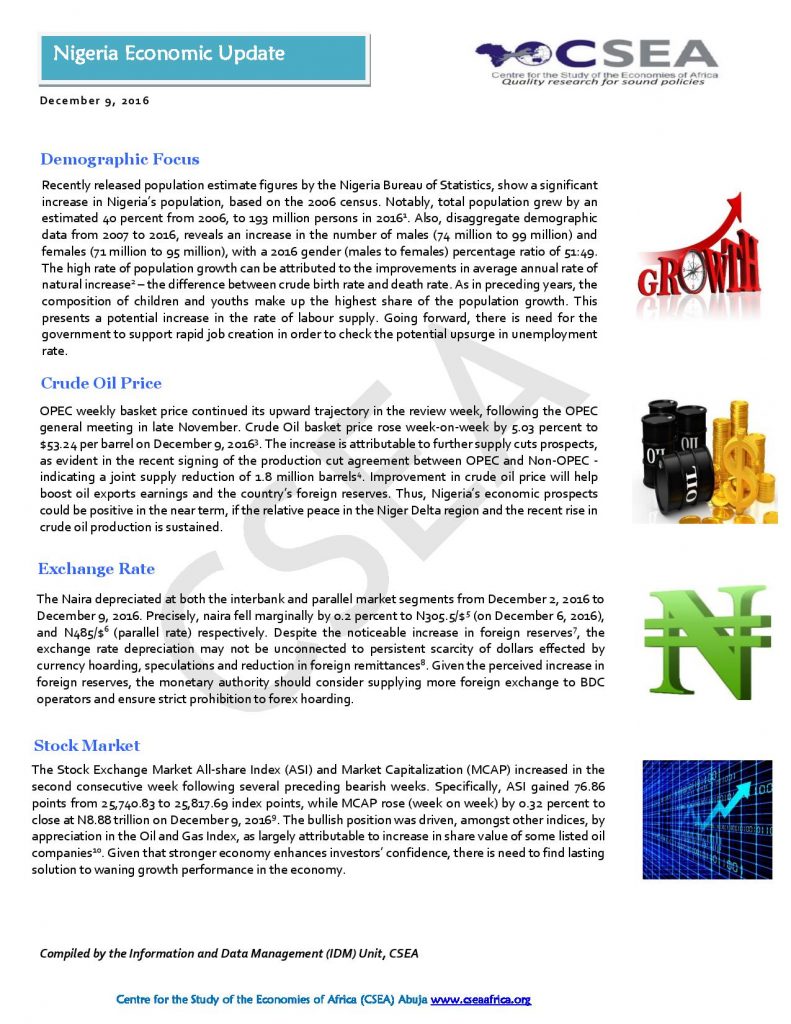Macroeconomic Report & Economic Updates

December 20, 2016
Nigeria Economic Update (Issue 52)
Recently released
population estimate figures by the Nigeria Bureau of Statistics, show a
significant increase in Nigerias population, based on the 2006 census. Notably,
total population grew by an estimated 40 percent from 2006, to 193 million persons
in 2016. Also, disaggregate demographic data from 2007 to 2016, reveals
an increase in the number of males (74 million to 99 million) and females (71
million to 95 million), with a 2016 gender (males to females) percentage ratio
of 51:49. The high rate of population growth can be attributed to the improvements
in average annual rate of natural increase the difference between
crude birth rate and death rate. As in preceding years, the composition of
children and youths make up the highest share of the population growth. This presents
a potential increase in the rate of labour supply. Going forward, there is need
for the government to support rapid job creation in order to check the
potential upsurge in unemployment rate.
